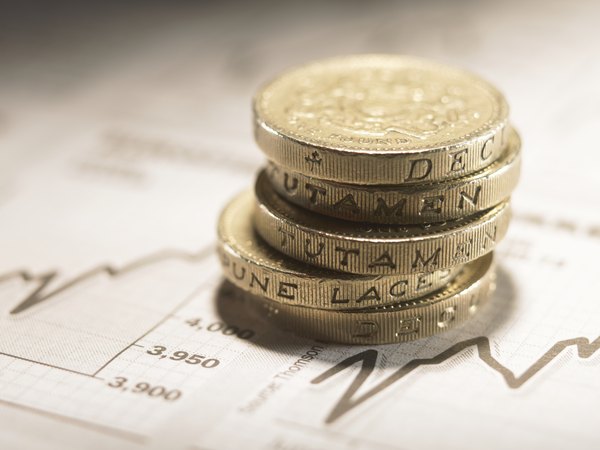How to Figure Out the Volatility of G10 Currencies
Calculating currency volatility provides insight into price direction and future valuation.
Adam Gault/Digital Vision/Getty Images
The G10 groups the top 10 global currencies in terms of trading. Their volatility can have an impact on the global economy. To determine the volatility of a G10 currency, you'll need to first know the currency you're measuring, then apply a calculation that involves measuring exchange rate change from one date to another.
Tip
To measure the G10's volatility, choose a stock and timeframe, then subtract the beginning date exchange rate from the ending date exchange rate, dividing that number by the beginning date exchange rate. You'll then multiple that number times 100.
What Is Volatility?
Volatility represents a range of price movements for a particular security, essentially giving you a snapshot of its prices over a period of time. Volatility can help you assess risk when it comes to investing in different securities, although other factors should also be taken into consideration when designing an investment strategy. Unlike most financial assets and securities, currencies are valued relative to other currencies. For valuation purposes, financial analysts often compare price movements of one currency against a “basket of currencies" that are pooled together and weighted in the form of an index in order to observe their collective price movements.
What Are G10 Currencies?
G10 currencies are the world’s 10 most liquid currencies. Liquidity is a measure of trade activity and the degree to which the currency can be bought or sold in the open market without having a significant impact on exchange rates. The euro, U.S. dollar, British pound, Japanese yen, Australian dollar, New Zealand dollar, Canadian dollar, Swiss franc, Norwegian krone and Swedish krona are the G10 currencies. The G10 currencies are often pointed to when answering the question, "What's the top currency in the world?"
Importance of Understanding Currency Volatility
Volatility will provide you with a basic understanding of a currency’s performance in the marketplace and its relative value against other currencies. Before making a large transaction that may involve an exchange of foreign currency, you would want to know the exchange rate and possibly be able to forecast its future price movements given past performance.
Gathering the Necessary Information
Decide on a currency to measure and its competing benchmark, often called the base currency. For example, if you were planning a trip to Europe, you would want to know the EUR/USD exchange rate -- the price in U.S. dollars to purchase a single euro. You could also research, "What's the top currency in the world?" and measure that. To use a G10 basket of currencies, a good indicator would be the PowerShares DB G10 Currency Harvest Fund (DBV:US) -- an exchange traded fund that reflects larger price movements of collective G10 currencies. You would then select a time frame for your calculation.
Completing the Calculations
Compare the exchange rate at two different points in time -- covering the stipulated time frame. Take the change in the exchange rate over that period of time (whether it be positive or negative), divide it by the exchange rate of the beginning date, and multiply the figure by 100.
Percent of change = [(ending date exchange rate - beginning date exchange rate) / beginning date exchange rate] x 100
Interpretation of Percentage Change
The change in percentage figure resulting from the calculation will express the measurement of your currency’s volatility. When calculating currency volatility, it is important to solve for percentage change and not the actual price change. The reason is that not all currency pairs will be denominated in the same currency and may therefore throw off the entire calculation, yielding price changes that do not paint an accurate picture of the currency’s volatility.
Other Useful Tools
Simple pencil and paper will usually suffice when performing this type of currency volatility calculation, but when variables and the ensuing calculation become more cumbersome and complicated, software applications such as Microsoft Excel or spin-off “Sheets” programs may be helpful in compiling large amounts of information and creating templates, formulas and functions for multiple volatility scenarios and calculations. This can also help you answer questions like, "What's the top currency in the world?"
References
Writer Bio
Shaun Hoyes has been a finance writer and blogger since 2011 with a specialty in investments. Hoyes is a financial advisor at a registered investment adviser (RIA) based in Fort Lauderdale, Fla. He holds a bachelor's degree from the University of Miami and a master's degree in business administration.

